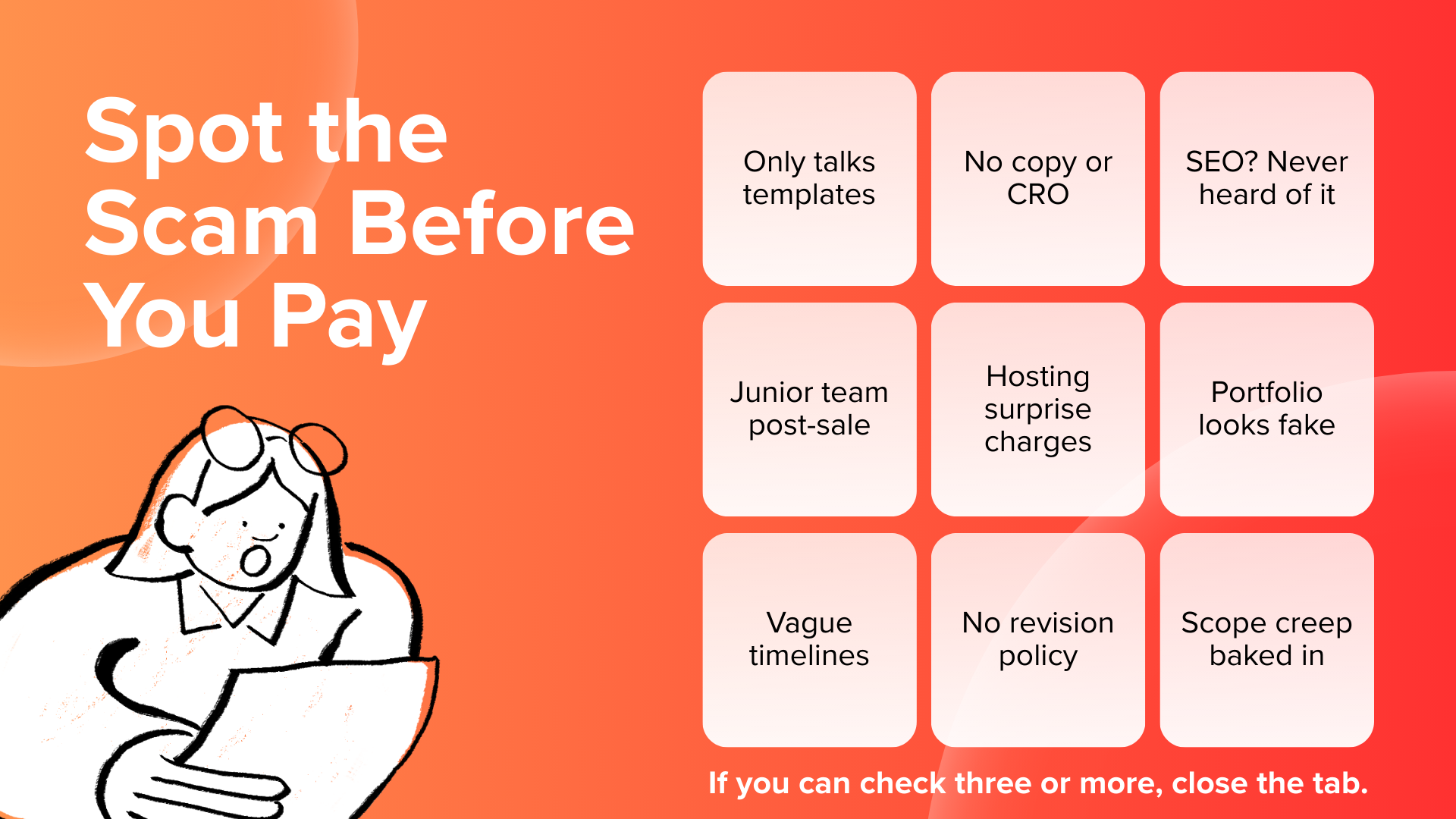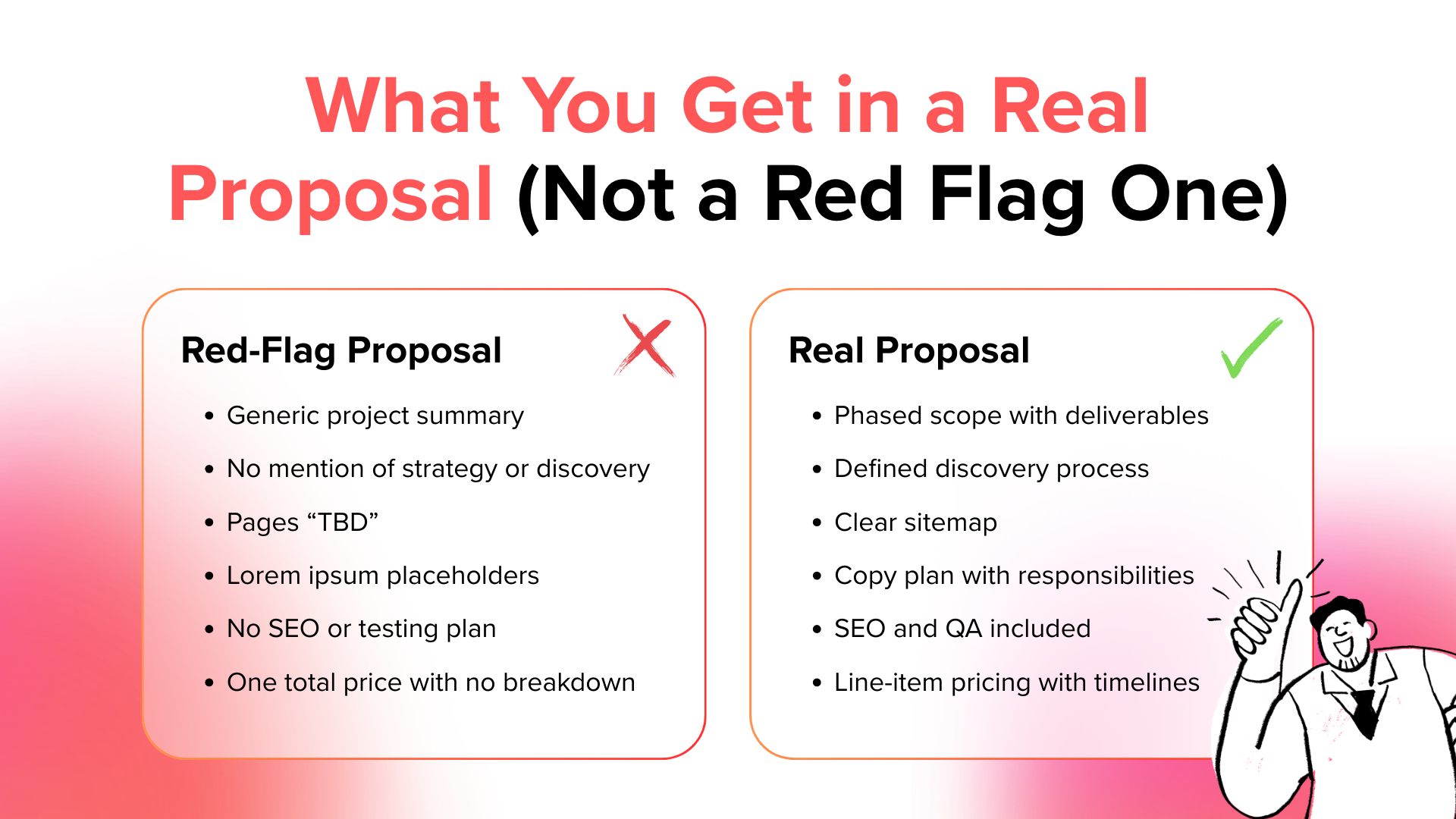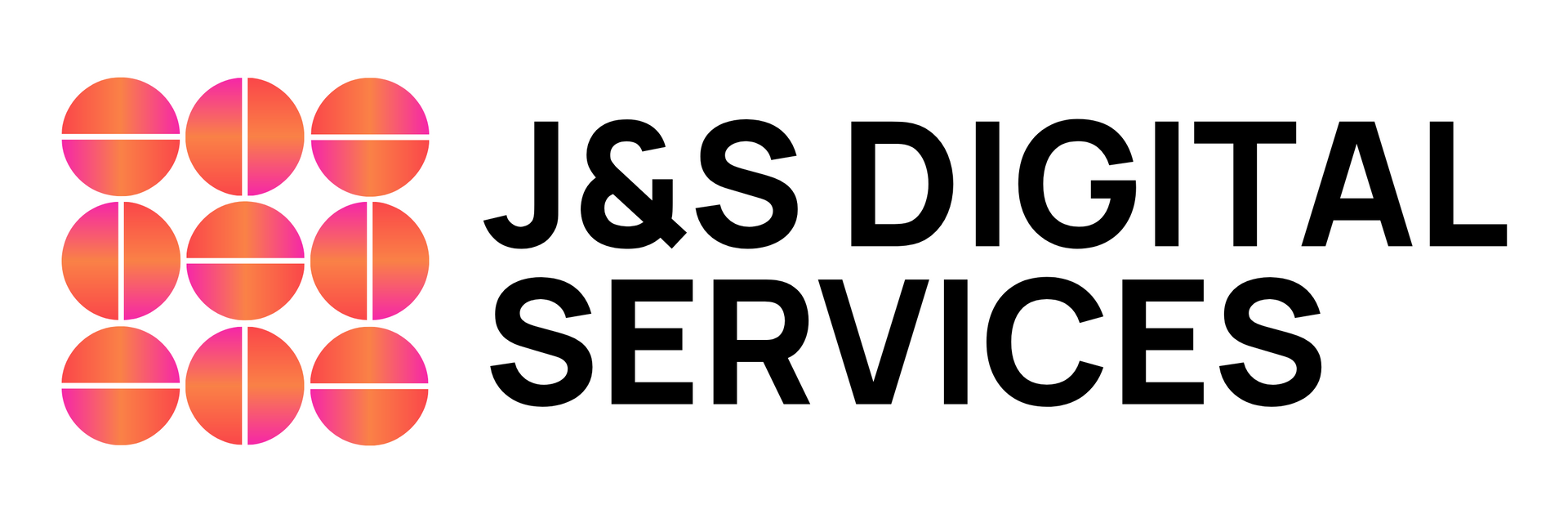San Diego Web Design Agency Checklist: 7 Red Flags Before You Pay a Deposit

We’ve heard it all before:
A new client puts trust in a shady San Diego web design agency, signing and paying for a new web design project — only to get gutted and ghosted.
It’s a horror story that’s all too common in San Diego. And if you’re not keen on being just another statistic, listen up.
Here’s our definitive checklist of red flags in a web design agency. By the end of this, you’ll have a better idea of what a shady San Diego website firm looks like.
Why Vetting Matters More Than Mockups
There are over 186 San Diego website firms. Not all of them will ghost you out of your hard-earned cash — but the ones that will can easily show you a site mockup or two. Put your trust in these San Diego web design agencies, and you’ll likely go 30% over your budget. So, if you want to get a fair deal, you need to bring your vetting A-game and distinguish a worthwhile agency from a bad one.
The Seven Red Flags
Any San Diego web design agency can wireframe and use Canva. So, how do you tell if you’re dealing with one that’s likely to bail or under-deliver?
To help you out, here’s our bad website design agency checklist.
Run, hang up, or run in the opposite direction if you see any of the following red flags.
Red Flag 1: Only Talks Templates
One of the hallmarks of bad web design service is a cookie-cutter approach. And nothing screams “cookie-cutter” louder than templated website builds. When an agency creates websites using a single approach without consulting you on your brand and goals, take your web design agency search elsewhere.
Red Flag 2: No Copy or CRO Plan
Think about it:
Why get a website at all if it’s not going to get people hooked or make money? Run if the San Diego website design agency builds sites but offers copy and CRO as separate services. Copywriting and conversion rate optimization services should be part of your web design package.
Red Flag 3: No SEO Hand-Off
SEO isn’t a one-and-done affair, nor is it a solo venture. If your website design agency isn’t talking about how it keeps you in the loop SEO-wise, it’s not worth your time, trust, and money.
Red Flag 4: Junior Team After Sale
You expected and paid for results, so why should you settle for a junior web design team after the sale? When an agency trusts work to developers with little to no experience, it’s a sign that you’re not being taken seriously.
Red Flag 5: Hidden Hosting and Maintenance Fees
Have you ever asked a San Diego website design agency for a quote? When you ask us for one, we’ll give you an estimate upfront, inclusive of hosting and maintenance fees.
Other agencies may not be as transparent. Instead, you’d get an estimate that seems affordable but doesn’t include hosting, maintenance, and other continuous services.
Red Flag 6: Portfolio Looks Identical
Some agencies need to beef up their image, and one of the ways they do this is by copying the portfolios of other agencies. Agencies do this to make themselves seem “legit and accomplished” even if they’re not.
So, if you’ve been shopping around and found that an agency’s portfolio looks similar to others, look for a different San Diego website firm. Choose one with a solid list of case studies instead.
Red Flag 7: Vague Timeline and Scope Creep Clauses
When you’ve finally decided on an agency, it will give you a contract. On the contract should be terms, timelines, and clearly outlined work scopes, deliverables, and responsibilities.
If a contract lacks any of these, consider it your sign to ask for clarification — or, even better, look elsewhere.

Questions To Ask Before You Sign
To really get a clue of who you’re dealing with, you should ask these five questions as early as the consultation call.
If the answers miss the boat or feel vague, rehearsed, or as dodgy as a Padres win streak, walk:
- How do you tailor websites to a client’s goals?: The agency should explain how design decisions are based on your audience, messaging, and sales process — not aesthetics alone.
- Who’s working on the project once the contract is signed?: You need to be clear on who’s handling the work and whether the team in charge has the know-how for the task.
- What’s included in the price, and what isn’t?: Expect a detailed scope that accounts for design, copy, development, SEO, revisions, and launch. Nothing should be ambiguous.
- How are timelines, revisions, and approvals handled?: A strong agency will outline each project phase, explain when feedback is needed, and define how many revisions you’re allowed.
- Do we fully own the site after launch?: You should be in full control. And that means having full admin access, design files, hosting, and domain without relying on the agency post-launch.
What a Solid Agency Proposal Looks Like
A proposal worth your attention and investment should have the following:
- Discovery Phase: This should explain how the agency learns about your business, audience, and goals. Surface-level research isn’t enough.
- Sitemap: Expect a clear outline of the site’s page structure. Each page should have a purpose and a defined place.
- Copy Plan: The proposal must describe where content comes from, who’s writing it, and how approvals will work.
- SEO Setup: Launch basics should be covered, including metadata, redirects, and performance. These are part of the build, not afterthoughts.
- Testing and QA: Look for browser, device, and functionality checks. The process should be documented and assigned to specific people.

FAQs
How long should a web design project take?
From experience, we’ve found that most projects take six to ten weeks, depending on size and content readiness.
Should the agency own my domain?
We say no! The domain should be in your name and under your control.
What CMS is best for local SMBs?
WordPress (with a few plugins like DiVi and WooCommerce for e-commerce) works best for most local businesses. It’s flexible and easy to manage.














